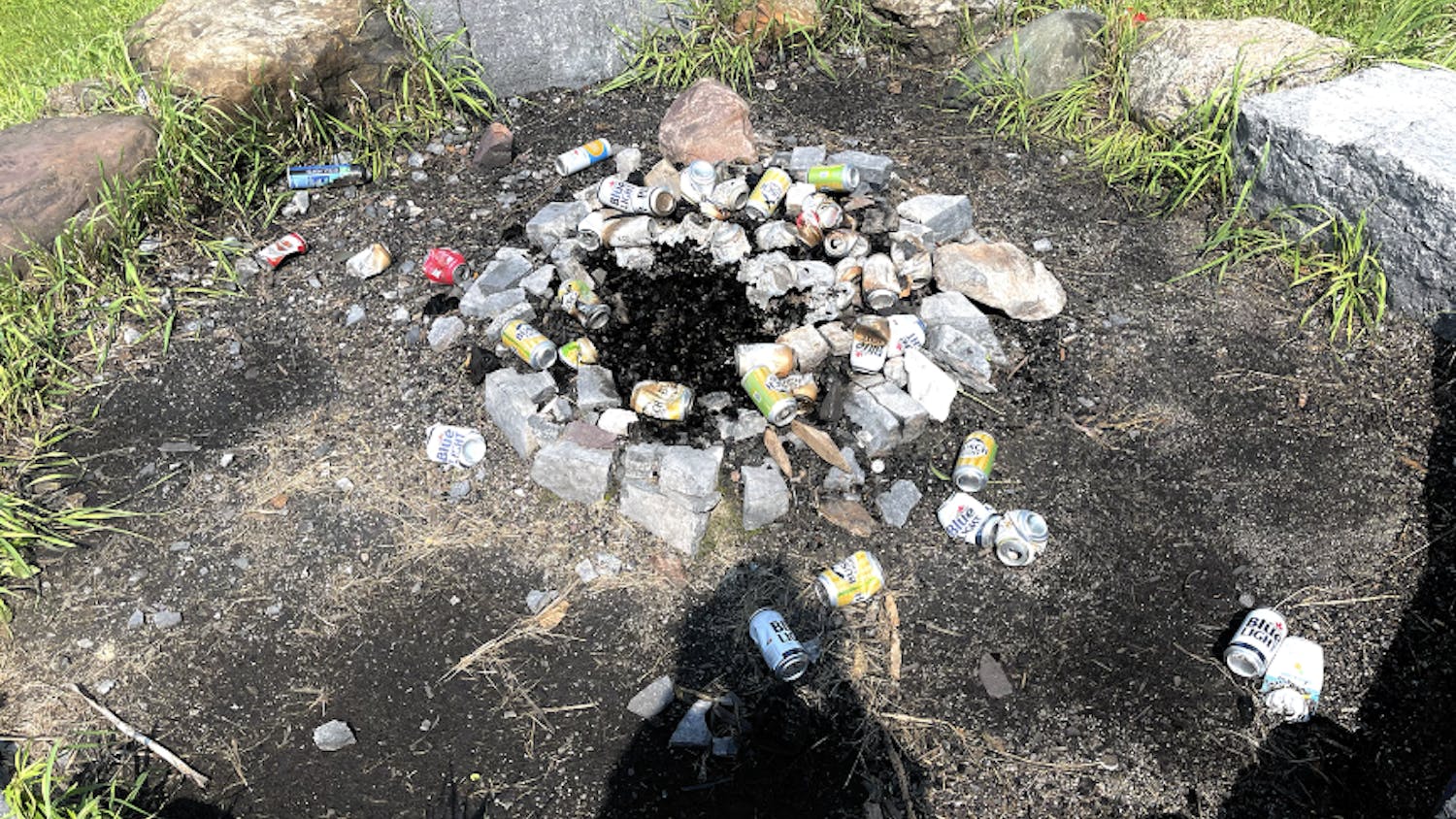Across the United States, controversies are erupting over race relations on college campuses. The responses to these controversies reflect a range of emotions — from revulsion to surprise and even defiance that such issues still plague our nation. These outside events are incredibly relevant to our community at Middlebury and merit our discussion. However, while conversations about injustice on campus are necessary, they are also difficult to navigate. Such a challenge reminds us of our first editorial this semester, in which we warned of “the coddling of the Middlebury mind” and the need to engage in uncomfortable conversations. We believe that it is as important as ever to seek to understand those who may see the world differently than we do. The current controversy highlights the need for all Middlebury students to respectfully engage with one another on the difficult issue of race relations on this campus.
On Thursday, Nov. 12, students gathered outside of Carr Hall for a “Middlebury Solidarity Blackout” to show support for black students facing racist threats at the University of Missouri. Such bigotry at Mizzou, in conjunction with protests at schools such as Yale University and Claremont McKenna College, have reignited student-led civil rights protests reminiscent of the 1960s. Participating in the Blackout was a good start for the goal of confronting such injustices and the event itself reflected the ongoing efforts of the Black Student Union (BSU) to engage in conversations about race and solidarity. However, for some participants who are less engaged in the cause of racial justice, the Blackout was an incomplete attempt to address racism on campus. As Kizzy Joseph and Elizabeth Dunn recently pointed out in their Beyond the Green article, Middlebury’s Blackout lacked conversation, a critical element of being an active ally to a cause.
Middlebury students came together for the Blackout last week in good faith, but in many ways the event exemplified the problems with racial discourse on this campus. For many black students and members of the BSU, the Blackout was just one part of the time and effort they put in daily to fight for this cause. On the other hand, some white students showed up, put on black clothing and assembled for a photo: an act that demonstrated a desire to be part of a solution without having to go any further. Some white students went so far as to post a Facebook status of solidarity. All of these actions are positive — it is better to demonstrate your support for the cause than not to come out for it at all — but stopping there, patting ourselves on the back and proudly wearing the mere label of “ally” is not substantial enough to help anyone.
Students’ actions at the Blackout — specifically those students who showed up for a photo and left — in many ways was yet another example of “slacktivism.” It is easy to get on board with a cause — particularly when you know it’s the right thing to do — but it’s much harder to engage with difficult issues and facilitate meaningful progress. Far more students showed up to the Blackout than have ever attended a BSU meeting or similar events that promote discourse around racial injustice.
As a predominantly white student body — and writing as a majority white editorial board — one of the most crucial steps to becoming an ally is listening and seeking out new perspectives. While white students will never be able to truly understand what it means to be black on Middlebury’s campus, white students can and must work towards sympathy. This requires conversation — with white students on the receiving end of the dialogue and often seeking out that dialogue. It means hearing about what it is like to be a student of color on a campus that was not built for you. It means being called out and made uncomfortable for any culpability in this system. It means learning what “white privilege” really is — the fact that most white students are not aware of their whiteness on a daily basis. As Chimamanda Ngozi Adichie writes in her novel, Americanah: “race doesn’t really exist for [white people] because it has never been a barrier. Black folks don’t have that choice.”
In order to engage more productively, it is the responsibility of white students to take advantage of the resources currently available to engage on the matter and deepen our understanding of race relations. A plethora of articles on white privilege and what it feels like to be black on college campuses can be found online; books have been written on the subject, including the one previously mentioned; forums such as the one coordinated by the BSU on Sunday following the Blackout help facilitate discussion; various departments at the College host guest lecturers to speak on race issues; and lastly — not to mention most pertinent to us as students — academic discourse in the classroom offers an opportunity to delve into racial relations. An eagerness to listen and learn from the experiences of our black classmates is the best way to begin this dialogue, and it is essential that we take better advantage of these opportunities.
This country is currently witnessing a heated debate over racism on college campuses and beyond. As a proactive student body, we are inclined to want to know what we can do to engage these issues on our own campus and make them better. The Blackout embodied that genuine desire to help, but it also shows us why good intentions are not enough. We, the Campus editorial board, are just as guilty of this as the rest of the white portion of the student body. We are calling upon all white students, including ourselves, to do better moving forward.



